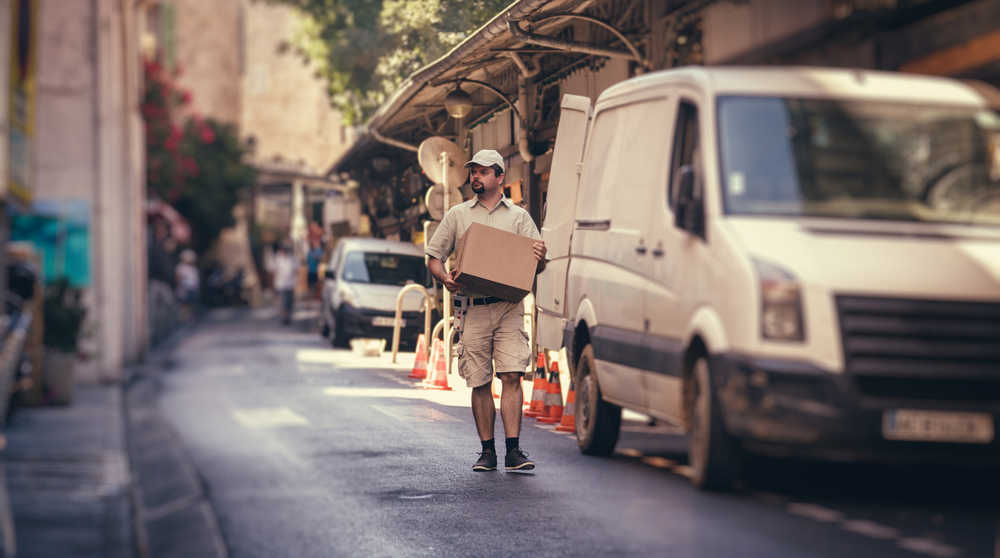Bruce Fair, chief revenue officer, MetaPack, speaks exclusively to Parcel and Postal Technology International about the latest trends in the delivery sector and what carriers can do to increase their market share
What trends are you seeing in the postal industry?
There is a strong trend toward ship from store, so bricks and mortar retailers really want to put their assets to work. Ship from store enables retailers that have a high street presence to turn those stores into mini warehouses, and that links into a second theme around trying to push for same-day delivery to be part of the suite of delivery options. It means that retailers can take the fight to Amazon by using that high street presence for both outbound delivery and more convenient returns.
Another trend we’re seeing is around PUDO becoming more and more prevalent in terms of appetite from retailers and consumers. The consumer desire for being in control, of being able to pick up from where you want, or return items, means PUDO is driving high levels of satisfaction in terms of the delivery experience with consumers. As we’ve seen from some of the research around the consumer experience at MetaPack, a good consumer delivery experience drives lifetime value.
We’re also seeing a continued trend for post-purchase solutions. At MetaPack we have solutions that help retailers and brands prior to the consumer making the purchase, such as displaying the delivery options that are available on the website to drive click-through rate, reduce cart abandonment, increase conversion rate etc. And then we work with retailers after the purchase is made to make that delivery to the consumer, whether that’s at home or through the PUDO network by helping retailers connect to the carrier that can make the delivery promise that has been made on the web front end.
Beyond that, we’re seeing a strong trend for putting consumers in control of how they want to return an item. Label in the box is very common and I think the consumer experience is very good but enabling consumers to return their items through a branded returns portal gives the consumer extra choice and also gives the retailer the ability to incentivize the consumer to use that method of return to speed up refunds. There is also a trend toward post-purchase branded tracking – we see an average consumer click on the tracking notifications between two and three times on every purchase, and that is an opportunity for the retailer to turn what can be a boring tracking notification into a branded experience and include an incentive to return to the website or store.
How can returns be further improved?
One of the major pain points is cross-border returns, which is an area that is continuing to receive a lot of investment around ensuring that retailers can access the carriers that can make the returns across the border efficiently, or allowing retailers to dispose of the items if the return is not cost effective.
We’ve launched Metapack Returns which helps retailers meet customers’ expectations by better managing both cross-border and domestic returns. The service offers the capability to provide a combination of pre-printed returns labels, a branded returns portal and an international returns solution.
How will volumes continue to change and how can the industry adapt?
The data that we have seen indicates that the UK is struggling in terms of its year-on-year (YOY) growth, and we can see that from the earnings reports from a lot of the retailers.
We saw 8% YOY growth in November 2018, 4% YOY in December 2018, and in January 2019 we saw 8% YOY again. We are used to seeing double digit growth in aggregate across the volumes of parcel shipments across the UK which shows we’ve got a very challenging marketplace in the UK right now. That is why cross border, international shipping is a continued focus for retailers to acquire new customers in new markets. We still see 20%+ YOY growth in Europe in terms of volumes for those same months but the UK is challenging.
What can the industry do to push growth?
The UK economy in terms of consumer confidence is tough right now, I think retailers and brands need to do everything they can on the delivery experience front to make sure they can win in key battlegrounds.
The consumer research that we’ve done has indicated very strongly that consumers want choice around delivery, they want convenience around how they receive items and return them, and retailers who are investing heavily in innovation in those areas are likely to be the ones that win in terms of volumes.
What effect with Brexit have on parcel volumes?
I don’t think Brexit will disrupt e-commerce and cross-border shipping too much, I expect the rates to stay the same, but I think it will result in more paperwork. There will be customs declaration documents that MetaPack will need to work on with the retailers and carriers to add to the label as it gets shipped, but I don’t think cross border will grind to a halt.
Some carriers have already diversified to offer paperless shipping for their customers. DHL Paperless is a very popular option for retailers shipping outside of the EU; it reduces one of those extra bits of paperwork the retailer has to produce, and there is definitely an appetite from retailers for that kind of paperless label printing facility.
I think if we do have more paperwork following our potential exit from the EU, then we may see more and more demand from retailers for carriers to develop paperless options.
How will the delivery experience change in the future?
If you look at Amazon, it very much uses delivery as a driver of urgency to the consumer – ‘order in the next seven hours and get it delivered tomorrow’ for example – so they use transit time data to drive urgency to the consumer.
We have that information, so there are some retailers that are taking the information from MetaPack in terms of the scheduled transit time, the actual delivery date that can be made available to the consumer, and push it to the consumer on the web front end.
I think what we’ll see in the future is retailers taking that information away from the checkout and moving it up the funnel on to the product page. At that point, the retailers can not only drive urgency to the consumer in their own funnel, but they can also use that information to try and drive increased basket size – ‘spend an extra £10 (US$13) and get free next-day delivery’ for example.
Retailers will continue to use the assets they have in the high street to increase convenience for customers when collecting or returning items, and also using those high street assets to enable metropolitan same-day delivery through carriers like On the dot.
I’m spending a lot of time in the USA looking at their marketplace, and while Amazon is growing its market share in Europe, it is growing much faster in the USA. One of the reasons for that is retailers are investing more in Europe in diversifying and enhancing the delivery options that they make available to consumers.
Can carriers keep up with the investments that retailers are making?
They are. It is a very competitive market place in Europe – there are dozens of carriers, whereas in markets like the USA there are only three main carriers. Therefore, carriers have to make the investments in their systems, otherwise they risk losing business to another carrier.
Retailers are using all of the supply chain assets that are available to them in order to maximize the consumer experience through delivery. I think it’s great that the cut off times for ordering an item are getting later and later in terms of being able to get next-day delivery and I think the convenience level of what is becoming a mature PUDO network in Europe is a trend that we’ll continue to see.
Is data the key to the future success of the delivery market?
I think it is a very important part because within a couple hundred milliseconds a retailer can access crucial data around delivery transit times, dates and availability of PUDO locations, and pass that back to the consumer on their web front end in a dynamic fashion based on where the consumer is located and the product they are looking for.
I think retailers will continue to utilize this data to ensure they’re doing everything they can to use delivery as a way of converting customers and increasing their lifetime value.



